Human Spaceflights to the Moon
![]()
International Flight No. 31Apollo 11USA |
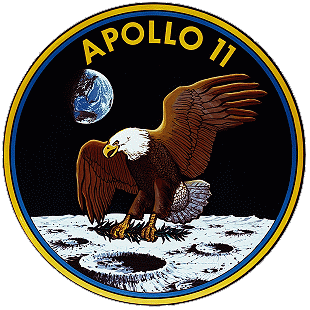 |
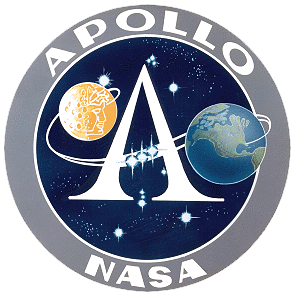 |
![]()
Launch, orbit and landing data
walkout photo |
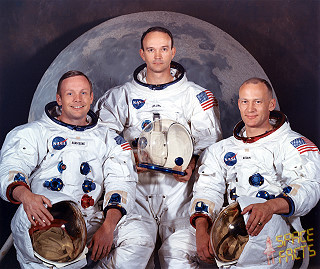 |
|||||||||||||||||||||||||||||||
alternative crew photo |
alternative crew photo |
|||||||||||||||||||||||||||||||
alternative crew photo |
alternative crew photo |
|||||||||||||||||||||||||||||||
alternative crew photo |
alternative crew photo |
|||||||||||||||||||||||||||||||
alternative crew photo |
alternative crew photo |
|||||||||||||||||||||||||||||||
Crew
| No. | Surname | Given names | Position | Flight No. | Duration | Orbits | |
| 1 | Armstrong | Neil Alden | CDR | 2 | 8d 03h 18m 34s | 1,5 | |
| 2 | Collins | Michael | CMP | 2 | 8d 03h 18m 34s | 1,5 | |
| 3 | Aldrin | Edwin Eugene "Buzz" | LMP | 2 | 8d 03h 18m 34s | 1,5 |
Crew seating arrangement
|
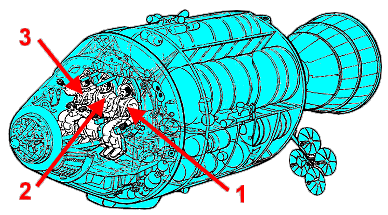 |
|
||||||||||||||||
Backup Crew
| No. | Surname | Given names | Position | |
| 1 | Lovell | James Arthur, Jr. "Shaky" | CDR | |
| 2 | Anders | William Alison "Bill" | CMP | |
| 3 | Haise | Fred Wallace, Jr. "Freddo" | LMP |
Support Crew
|
||||||||||||||||
Hardware
| Launch vehicle: | Saturn V (SA-506) |
| Spacecraft: | Apollo (CSM-107 „Columbia“ / LM-5 „Eagle“) |
Flight
|
Launch from Cape Canaveral (KSC) and
landing 1600 km southwest of Honolulu in the Pacific Ocean. The Command Module (CM) was a conical pressure vessel with a maximum diameter of 3.9 m at its base and a height of 3.65 m. It was made of an aluminum honeycomb sandwich bonded between sheet aluminum alloy. The base of the CM consisted of a heat shield made of brazed stainless steel honeycomb filled with a phenolic epoxy resin as an ablative material and varied in thickness from 1.8 to 6.9 cm. At the tip of the cone was a hatch and docking assembly designed to mate with the lunar module. The CM was divided into three compartments. The forward compartment in the nose of the cone held the three 25.4 m diameter main parachutes, two 5 m drogue parachutes, and pilot mortar chutes for Earth landing. The aft compartment was situated around the base of the CM and contained propellant tanks, reaction control engines, wiring, and plumbing. The crew compartment comprised most of the volume of the CM, approximately 6.17 cubic meters of space. Three astronaut couches were lined up facing forward in the center of the compartment. A large access hatch was situated above the center couch. A short access tunnel led to the docking hatch in the CM nose. The crew compartment held the controls, displays, navigation equipment and other systems used by the astronauts. The CM had five windows: one in the access hatch, one next to each astronaut in the two outer seats, and two forward-facing rendezvous windows. Five silver/zinc-oxide batteries provided power after the CM and SM detached, three for re-entry and after landing and two for vehicle separation and parachute deployment. The CM had twelve 420 N nitrogen tetroxide/hydrazine reaction control thrusters. The CM provided the re-entry capability at the end of the mission after separation from the Service Module. The Service Module (SM) was a cylinder 3.9 meters in diameter and 7.6 m long which was attached to the back of the CM. The outer skin of the SM was formed of 2.5 cm thick aluminum honeycomb panels. The interior was divided by milled aluminum radial beams into six sections around a central cylinder. At the back of the SM mounted in the central cylinder was a gimbal mounted re-startable hypergolic liquid propellant 91,000 N engine and cone shaped engine nozzle. Attitude control was provided by four identical banks of four 450 N reaction control thrusters each spaced 90 degrees apart around the forward part of the SM. The six sections of the SM held three 31-cell hydrogen oxygen fuel cells which provided 28 volts, two cryogenic oxygen and two cryogenic hydrogen tanks, four tanks for the main propulsion engine, two for fuel and two for oxidizer, and the subsystems the main propulsion unit. Two helium tanks were mounted in the central cylinder. Electrical power system radiators were at the top of the cylinder and environmental control radiator panels spaced around the bottom. The lunar module (LM) was a two-stage vehicle designed for space operations near and on the Moon. The spacecraft mass of 15,065 kg was the mass of the LM including astronauts, propellants and expendables. The dry mass of the ascent stage was 2180 kg and it held 2639 kg of propellant. The descent stage dry mass was 2034 kg and 8212 kg of propellant were onboard initially. The ascent and descent stages of the LM operated as a unit until staging, when the ascent stage functioned as a single spacecraft for rendezvous and docking with the command and service module (CSM). The descent stage comprised the lower part of the spacecraft and was an octagonal prism 4.2 meters across and 1.7 m thick. Four landing legs with round footpads were mounted on the sides of the descent stage and held the bottom of the stage 1.5 m above the surface. The distance between the ends of the footpads on opposite landing legs was 9.4 m. One of the legs had a small astronaut egress platform and ladder. A one meter long conical descent engine skirt protruded from the bottom of the stage. The descent stage contained the landing rocket, two tanks of aerozine 50 fuel, two tanks of nitrogen tetroxide oxidizer, water, oxygen and helium tanks and storage space for the lunar equipment and experiments, and in the case of Apollo 15, 16, and 17, the lunar rover. The descent stage served as a platform for launching the ascent stage and was left behind on the Moon. The ascent stage was an irregularly shaped unit approximately 2.8 m high and 4.0 by 4.3 meters in width mounted on top of the descent stage. The ascent stage housed the astronauts in a pressurized crew compartment with a volume of 6.65 cubic meters which functioned as the base of operations for lunar operations. There was an ingress-egress hatch in one side and a docking hatch for connecting to the CSM on top. Also mounted along the top were a parabolic rendezvous radar antenna, a steerable parabolic S-band antenna, and 2 in-flight VHF antennas. Two triangular windows were above and to either side of the egress hatch and four thrust chamber assemblies were mounted around the sides. At the base of the assembly was the ascent engine. The stage also contained an aerozine 50 fuel and an oxidizer tank, and helium, liquid oxygen, gaseous oxygen, and reaction control fuel tanks. There were no seats in the LM. A control console was mounted in the front of the crew compartment above the ingress-egress hatch and between the windows and two more control panels mounted on the side walls. The ascent stage was launched from the Moon at the end of lunar surface operations and returned the astronauts to the CSM. The descent engine was a deep-throttling ablative rocket with a maximum thrust of about 45,000 N mounted on a gimbal ring in the center of the descent stage. The ascent engine was a fixed, constant-thrust rocket with a thrust of about 15,000 N. Maneuvering was achieved via the reaction control system, which consisted of the four thrust modules, each one composed of four 450 N thrust chambers and nozzles pointing in different directions. Telemetry, TV, voice, and range communications with Earth were all via the S-band antenna. VHF was used for communications between the astronauts and the LM, and the LM and orbiting CSM. There were redundant transceivers and equipment for both S-band and VHF. An environmental control system recycled oxygen and maintained temperature in the electronics and cabin. Power was provided by 6 silver-zinc batteries. Guidance and navigation control were provided by a radar ranging system, an inertial measurement unit consisting of gyroscopes and accelerometers, and the Apollo guidance computer. The Early Apollo Surface Experiments Package (EASEP) consisted of a set of scientific instruments emplaced at the Apollo 11 landing site by the astronauts. This package was the forerunner of the ALSEP experiment packages used on the later Apollo missions. It consisted of two solar panels to provide power (the EASEP could only operate during lunar day), an antenna and communications system to send data to Earth ground stations and receive commands, a passive seismometer, designed to measure seismic activity and physical properties of the lunar crust and interior, and a lunar dust detector, to measure dust accumulation and radiation damage to solar cells. The EASEP consisted of a square base on which was mounted the seismometer and dust detector, along with an isotope heater and cylindrical antenna mast with an antenna positioning mechanism. Two brackets protruded from opposite sides of the base and held the canted rectangular solar panels, positioned to face towards the east and west. The unit had a total mass of 48 kg. The EASEP received uplink commands at 2119 MHz and transmitted telemetry data back to Earth at 2276.5 MHz. The laser ranging retroreflector (LRRR) was also considered part of the EASEP although it was not attached to the unit and required no power. It was deployed about 5 meters NNW of the EASEP. The EASEP was deployed approximately 17 m south of the LM, at 0.6735 N latitude, 23.4730 E longitude and was turned on by ground command at 04:40:39 UTC on July 21, 1969 while the astronauts were still on the surface. About 5 hours before local lunar sunset at 10:58:46 UTC on August 03, 1969 transmission was stopped by ground command when the power began to drop as predicted. Despite operating temperatures which exceeded the planned maximum by 30 C the EASEP functioned normally. The instrument was turned on again on the next lunar day but on August 27, 1969, near noon of this second lunar day, the EASEP no longer accepted commands from Earth stations and the experiment was terminated. This mission marked the first manned lunar landing on July 20, 1969 (Neil Armstrong and Buzz Aldrin). On July 20, 1969 the lunar module (LM) Eagle separated from the command module Columbia. Michael Collins, alone aboard Columbia, inspected Eagle as it pirouetted before him to ensure the craft was not damaged. As the descent began, Neil Armstrong and Buzz Aldrin found that they were passing landmarks on the surface 4 seconds early and reported that they were "long": they would land miles west of their target point. Five minutes into the descent burn, and 6,000 feet (1,800 m) above the surface of the Moon, the LM navigation and guidance computer distracted the crew with the first of several unexpected "1202" and "1201" program alarms. Inside Mission Control Center in Houston, Texas, computer engineer Jack Garman told guidance officer Steve Bales it was safe to continue the descent and this was relayed to the crew. The program alarms indicated "executive overflows", meaning the guidance computer could not complete all of its tasks in real time and had to postpone some of them. During the mission, the cause was diagnosed as the rendezvous radar switch being in the wrong position, causing the computer to process data from both the rendezvous and landing radars at the same time. However, in 2005, software engineer Don Eyles concluded in a Guidance and Control Conference paper, that the problem was actually due to a hardware design bug that had been seen previously on testing of the first unmanned LM for Apollo 5. Having the rendezvous radar on (so that it was warmed up, in case of an emergency landing abort) should have been irrelevant to the computer, but an electrical phasing mismatch between two parts of the rendezvous radar system could cause the stationary antenna to appear to the computer as dithering back and forth between two positions, depending upon how the hardware randomly powered up. The extra spurious cycle stealing, as the rendezvous radar updated an involuntary counter, caused the computer alarms. When Neil Armstrong again looked outside, he saw that the computer's landing target was in a boulder-strewn area just north and east of a 300 meters (980 ft) diameter crater (later determined to be "West crater", named for its location in the western part of the originally planned landing ellipse). Neil Armstrong took semi-automatic control and, with Buzz Aldrin calling out altitude and velocity data, landed at 20:17 UTC on July 20, 1969 with about 25 seconds of fuel left. Apollo 11 landed with less fuel than other missions, and the astronauts also encountered a premature low fuel warning. This was later found to have been due to greater propellant 'slosh' than expected, uncovering a fuel sensor. On subsequent missions, extra baffles were added to the tanks to prevent this. Neil Armstrong continued with the remainder of the post landing checklist, "Engine arm is off" before responding to Charles Duke with the words, "Houston, Tranquility Base here. The Eagle has landed." Neil Armstrong's abrupt change of call sign from "Eagle" to "Tranquility Base" caused momentary confusion at Mission Control and Charles Duke remained silent for a couple of seconds before expressing the relief of Mission Control: "Roger, Twan-Tranquility, we copy you on the ground. You got a bunch of guys about to turn blue. We're breathing again. Thanks a lot." The landing area was the Sea of Tranquility. At 02:39 UTC on Monday July 21, 1969 (10:39pm EDT, Sunday July 20, 1969), Neil Armstrong opened the hatch, and at 02:51 UTC began his descent to the lunar surface. The Remote Control Unit controls on his chest kept him from seeing his feet. Climbing down the nine-rung ladder, Neil Armstrong pulled a D-ring to deploy the Modular Equipment Stowage Assembly (MESA) folded against Eagle's side and activate the TV camera, and at 02:56:20 UTC (10:56:20pm EDT) he set his left foot on the surface. The first landing used slow-scan television incompatible with commercial TV, so it was displayed on a special monitor and a conventional TV camera viewed this monitor, significantly reducing the quality of the picture. After describing the surface dust as "very fine-grained" and "almost like a powder", Neil Armstrong stepped off Eagle's footpad and uttered his famous line "That's one small step for [a] man, one giant leap for mankind" six and a half hours after landing. Buzz Aldrin joined him, describing the view as "Magnificent desolation." Neil Armstrong and Buzz Aldrin, who followed 13 minutes later, collected lunar rocks and other material (21.55 kg). Also, a solar wind composition experiment was deployed and later recovered and they build a scientific station (EASEP), including a passive seismic experiment and a laser ranging retro reflector. The crew had a telephone call with U.S. President Richard Nixon during lunar surface staying and they erected the U.S. flag. The total lunar surface stay time was 21h 36m. At 17:54 UTC, they lifted off in Eagle's ascent stage, carrying 21.5 kilograms of lunar samples with them, to rejoin CMP Michael Collins aboard Columbia in lunar orbit. During the launch Buzz Aldrin looked up in time to see the exhaust from the ascent module's engine knock over the American flag they had planted. The two spacecrafts performed a successful docking of LM Eagle with CSM Columbia (with Michael Collins on board, who had little to do, while Neil Armstrong and Buzz Aldrin landed on the moon). The recovery ship was the USS Hornet. The astronauts were carried by helicopter to the Hornet where they entered a mobile quarantine facility to begin a 17 day-period of observation under strict quarantine conditions. |
EVA data
| Name | Start | End | Duration | Mission | Airlock | Suit | |
| EVA | Armstrong, Neil | 21.07.1969, 02:39:33 UTC | 21.07.1969, 05:11:13 UTC | 2h 31m 40s | Apollo 11 | LM Eagle | A7L No. 56 |
| EVA | Aldrin, Buzz | 21.07.1969, 02:39:33 UTC | 21.07.1969, 05:11:13 UTC | 2h 31m 40s | Apollo 11 | LM Eagle | A7L No. 77 |
| IVA | Armstrong, Neil | 21.07.1969, 07:40 UTC | 21.07.1969, 07:49 UTC | 0h 09m | Apollo 11 | LM Eagle | A7L No. 56 |
| IVA | Aldrin, Buzz | 21.07.1969, 07:40 UTC | 21.07.1969, 07:49 UTC | 0h 09m | Apollo 11 | LM Eagle | A7L No. 77 |
 |
Photos / Graphics
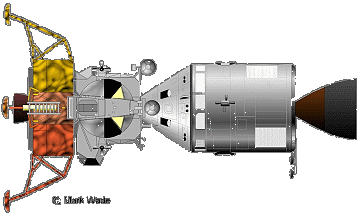 |
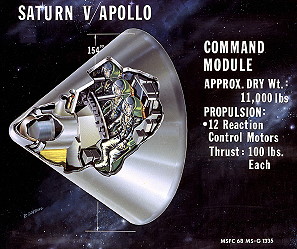 |
|
Source: www.astronautix.com/ |
|
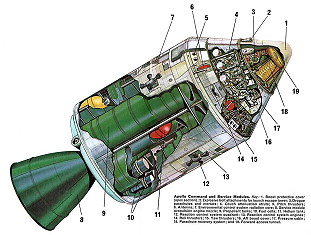 |
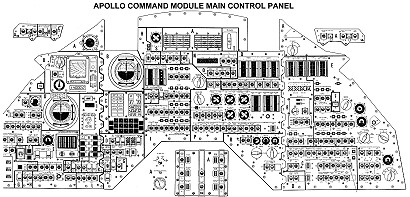 |
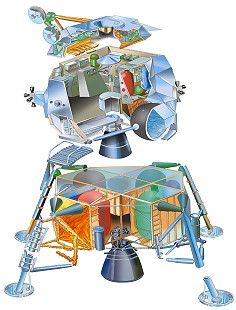 |
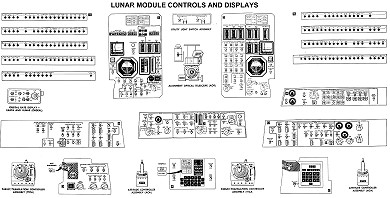 |
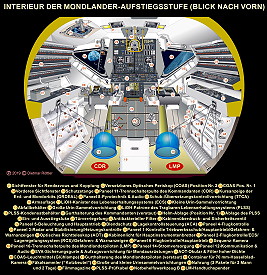 |
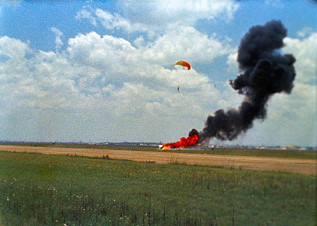 |
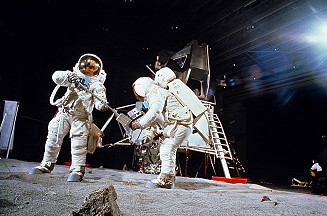 |
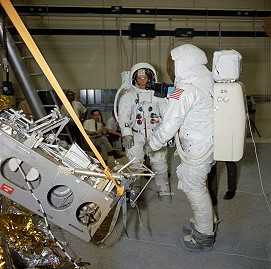 |
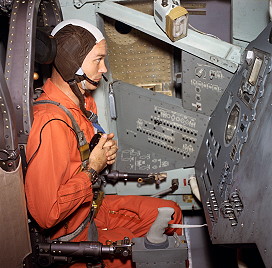 |
 |
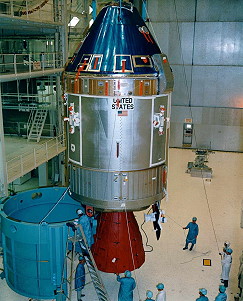 |
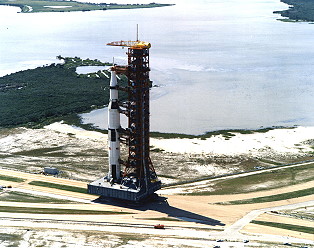 |
 |
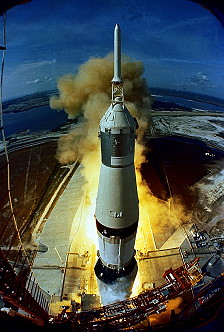 |
 |
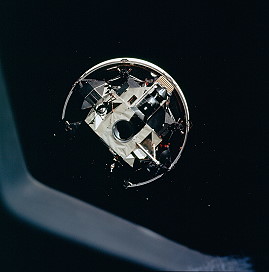 |
 |
 |
 |
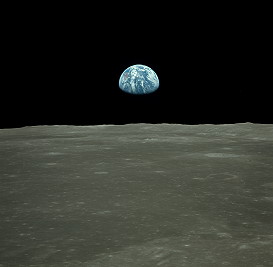 |
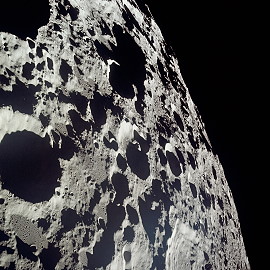 |
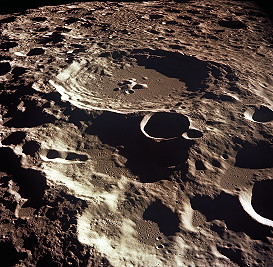 |
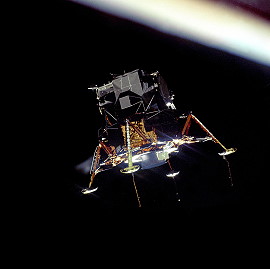 |
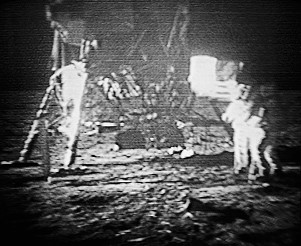 |
 |
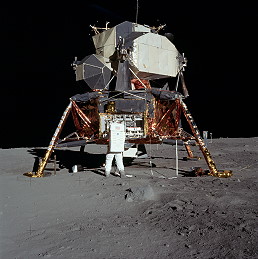 |
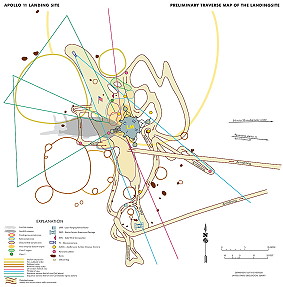 |
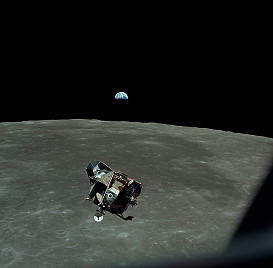 |
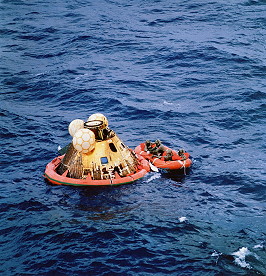 |
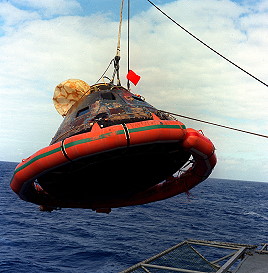 |
more photos from the moon |
|
more Earth observation photos |
|
more Moon observation photos |
|
| © |  |
Last update on March 01, 2023.  |
 |